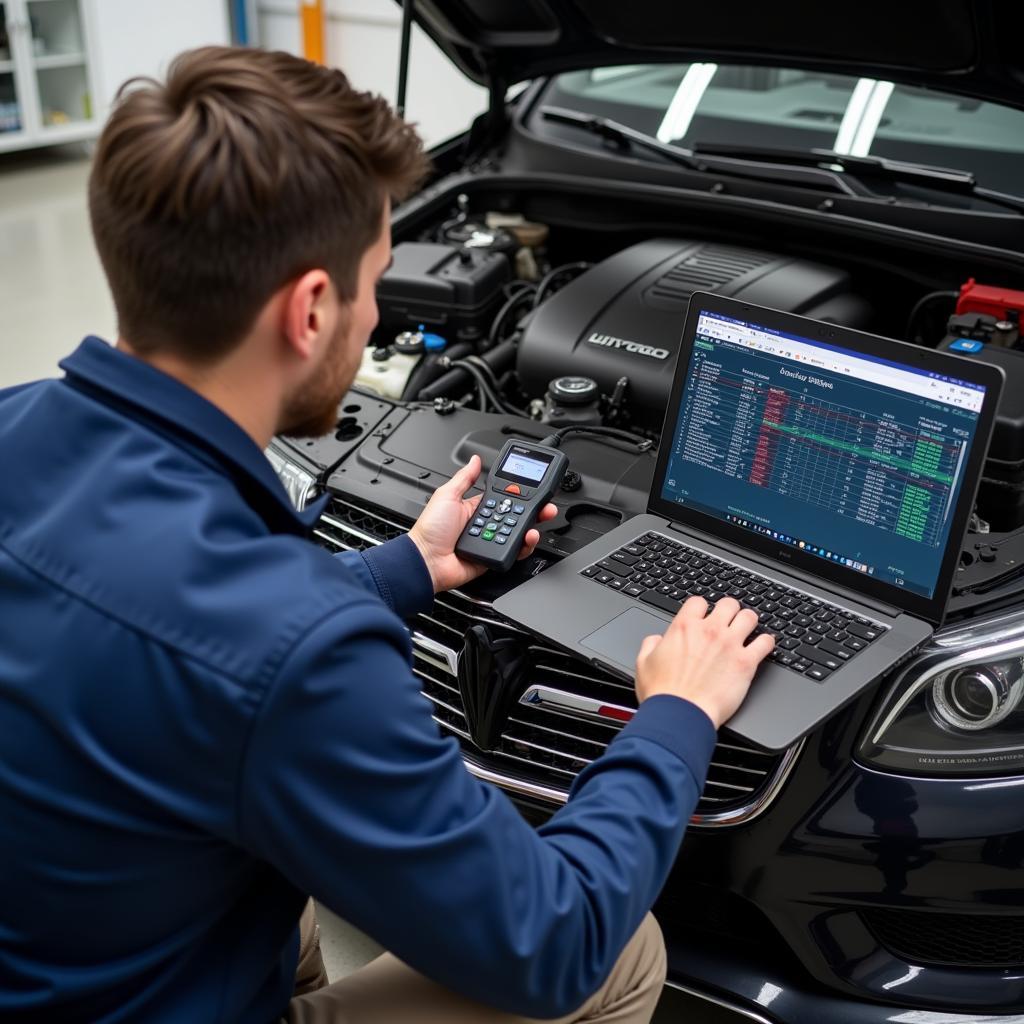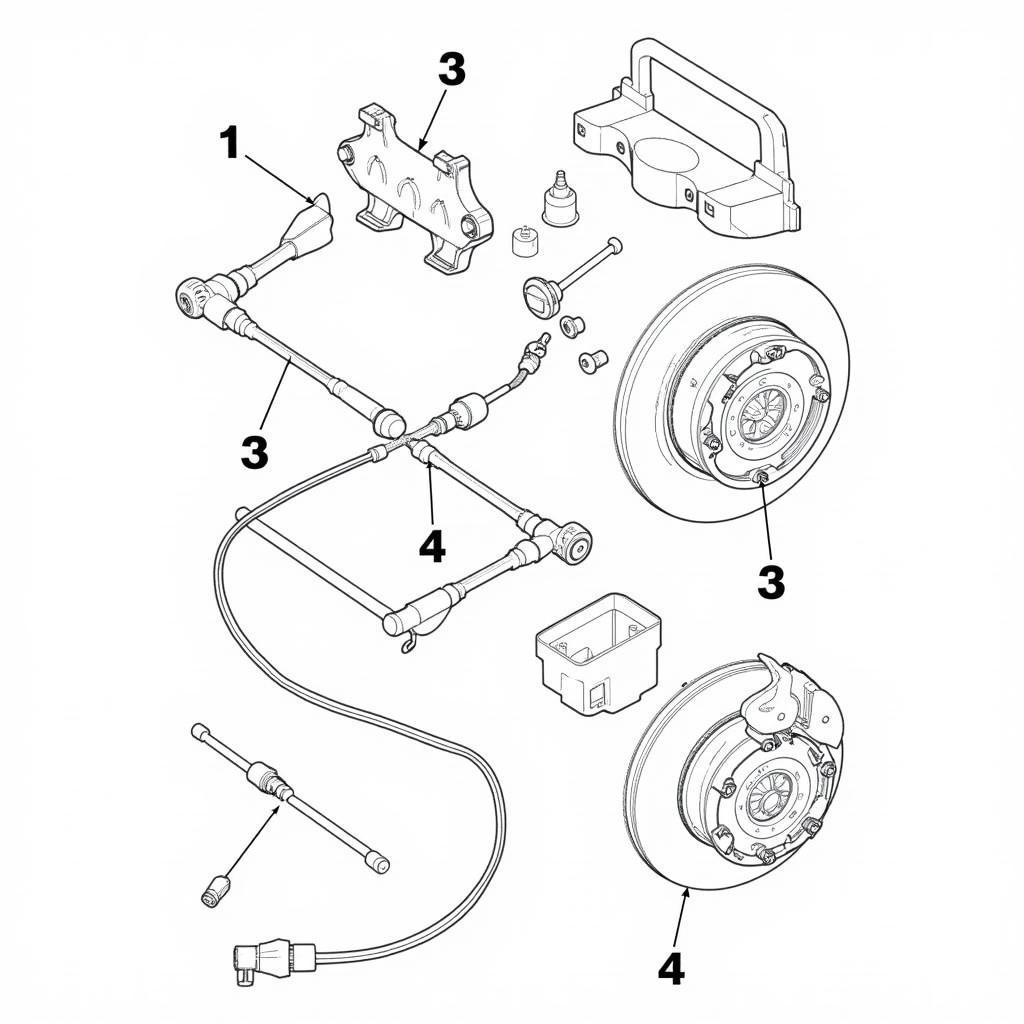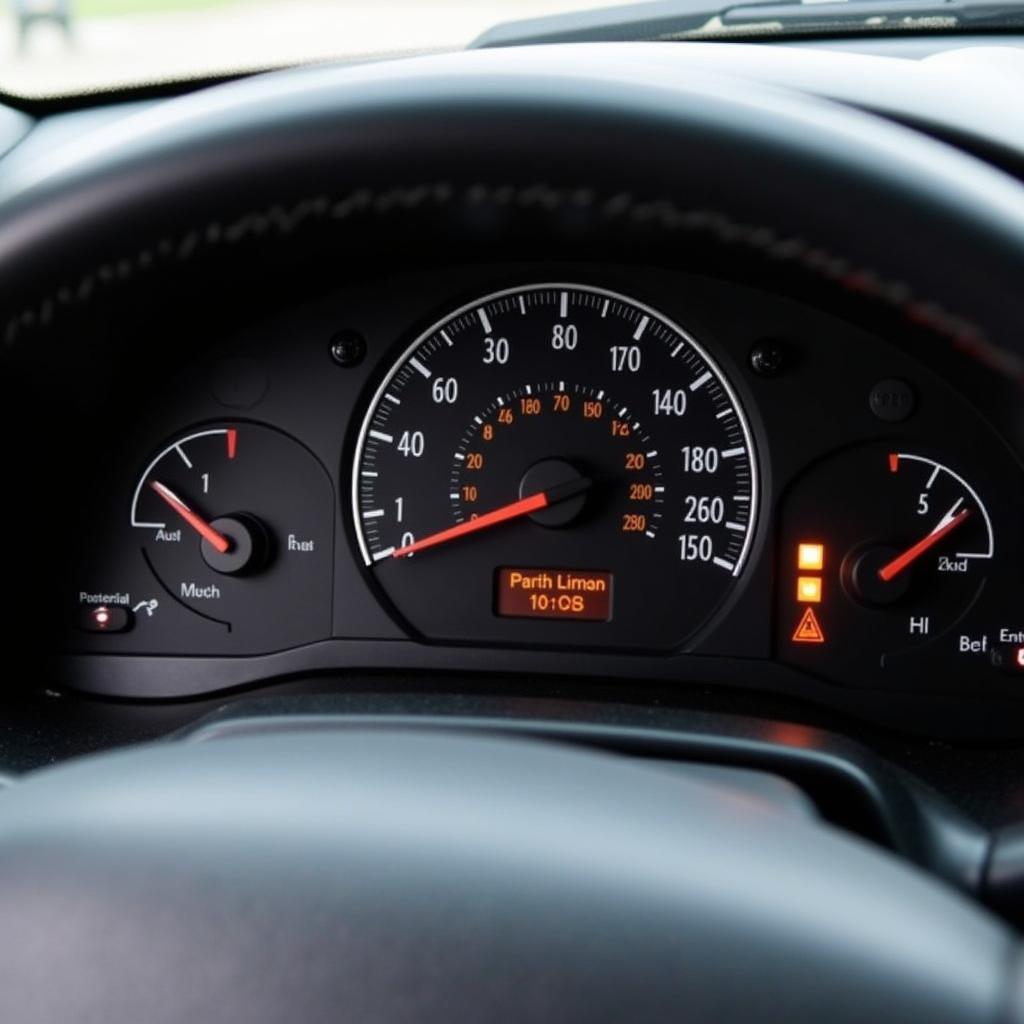The 1970 Camaro, an iconic muscle car, continues to thrill enthusiasts today. However, even classics can have their quirks. One common issue owners face is the dreaded parking brake warning light staying on. While this might seem like a minor annoyance, it can signal underlying problems that need attention. This comprehensive guide dives into the potential causes behind a 1970 Camaro parking brake warning light staying on and provides effective solutions to get you back on the road with peace of mind.
Common Causes of a Lit Parking Brake Warning Light
There are several reasons why your 1970 Camaro’s parking brake warning light might illuminate:
- Low Brake Fluid: The most common culprit is low brake fluid. This is a serious issue, as it affects your car’s overall braking ability.
- Faulty Parking Brake Switch: Your Camaro uses a switch activated when you engage the parking brake. Over time, this switch can wear out or malfunction, causing the warning light to stay on even when the brake is released.
- Worn Brake Shoes/Pads: Worn brake shoes or pads can also trigger the warning light. As the friction material wears down, it can affect the brake system’s pressure, causing the light to illuminate.
- Parking Brake Cable Issues: A stretched, stuck, or damaged parking brake cable can prevent the brakes from fully disengaging, leading to a continuously lit warning light.
- Hydraulic System Problems: While less common, problems within the hydraulic system, such as a faulty master cylinder or wheel cylinder, can impact brake pressure and trigger the warning light.
 Checking the brake fluid reservoir in a 1970 Camaro.
Checking the brake fluid reservoir in a 1970 Camaro.
Troubleshooting Your 1970 Camaro’s Parking Brake Light
Before heading to a mechanic, you can perform some simple troubleshooting steps:
- Check the Brake Fluid Level: Open the hood and locate the brake fluid reservoir. Make sure the fluid level is within the “Min” and “Max” lines. If it’s low, add the appropriate brake fluid.
- Inspect the Parking Brake Switch: Locate the parking brake switch, usually found under the dashboard near the brake pedal. Check for loose connections, corrosion, or damage. If necessary, replace the switch.
- Examine the Parking Brake Cable: Follow the parking brake cable from the handle to the rear wheels. Look for signs of damage, kinks, or excessive slack. If the cable is compromised, it will need to be replaced.
 A mechanic inspecting the parking brake cable on a 1970 Camaro.
A mechanic inspecting the parking brake cable on a 1970 Camaro.
When to Seek Professional Help
If the problem persists after basic troubleshooting, it’s time to consult a qualified mechanic specializing in classic cars. They have the expertise and tools to diagnose and repair complex brake issues, ensuring your 1970 Camaro remains safe and roadworthy.
“Ignoring a persistent parking brake warning light can lead to more serious problems down the line,” says John Smith, a classic car mechanic with over 20 years of experience. “It’s crucial to address the underlying issue promptly to prevent further damage and ensure your safety on the road.”
Remote Diagnostics and Programming: Modern Solutions for a Classic
Today, advancements in automotive technology have made their way even to classics like your 1970 Camaro. Remote diagnostics and programming can offer valuable insights into the issue. Some specialized services can remotely connect to your car’s computer system, scan for fault codes, and even program certain modules. While this might not solve physical problems like a worn cable, it can identify electronic glitches or sensor malfunctions related to the parking brake system.
 A mechanic using a laptop for remote diagnostics on a 1970 Camaro.
A mechanic using a laptop for remote diagnostics on a 1970 Camaro.
Conclusion
A glowing parking brake warning light on your 1970 Camaro should never be ignored. Understanding the potential causes and solutions empowers you to address the issue promptly. Remember, regular maintenance and timely repairs are crucial to enjoying your classic car safely and reliably for years to come.


